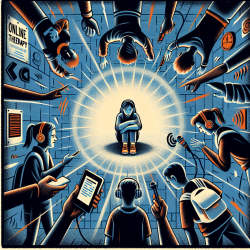Introduction
Peer victimization in schools is a critical issue that can have lasting negative impacts on students' mental and physical health. The study titled Risk Factors for Peer Victimization among Middle and High School Students sheds light on the multifaceted nature of this problem. As practitioners, understanding these risk factors is crucial for developing effective interventions.
Key Findings
The study highlights several individual, school, and peer factors that contribute to peer victimization. Key findings include:
- Middle school students are more likely to experience victimization compared to high school students.
- Students receiving lower grades (Cs/Ds/Fs) are at higher risk.
- Negative school behaviors, such as skipping class and avoiding school activities, increase the likelihood of victimization.
- Smaller schools (less than 1000 students) report higher victimization rates.
- The presence of gangs in schools significantly correlates with increased victimization.
Implications for Practitioners
Practitioners can leverage these findings to enhance their interventions:
- Early Intervention: Focus on middle school students for early prevention programs.
- Academic Support: Provide additional support for students with lower grades to reduce their victimization risk.
- Behavioral Programs: Implement programs that address negative school behaviors to decrease victimization.
- School Climate Improvement: Enhance supervision and establish firm anti-bullying policies, especially in smaller schools.
- Gang Prevention: Collaborate with community resources to address gang presence in schools.
Further Research and Action
While this study provides valuable insights, further research is needed to explore additional factors and develop comprehensive strategies. Practitioners are encouraged to stay informed and adapt their approaches based on emerging evidence.
To read the original research paper, please follow this link: Risk Factors for Peer Victimization among Middle and High School Students.










